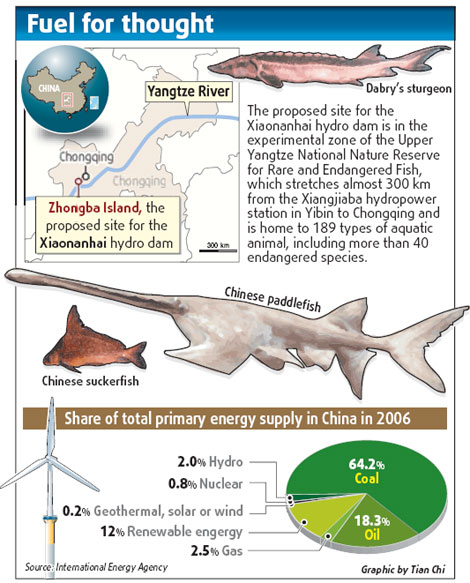It is not the first time conservation has made way for hydro-electricity projects in China. In 1987, when the nature zone for the endangered Yangtze River fish was established, it stretched for 443 km.
The zone now stands at 353 km as the boundaries were re-drawn in 2005 to exclude the section between Xiangjiaba and Xiluodu on the upper reaches to allow for the construction of two giant hydropower plants, also developed by the China Three Gorges Corp.

The move led to the flooding of around 90 percent of the natural spawning site for the Chinese paddlefish, as well as 50 percent for the Dabry's sturgeon.
"If the nature reserve continues to shrink, the ecosystem in the upper Yangtze will be completely destroyed," warned Ma Jun, director of the Institute of Public and Environmental Affairs.
The veteran journalist and author of China's Water Crisis, the nation's first major book on the subject of its environmental pollution crisis, fears the building of dams poses an even greater danger to rivers than toxic contamination.
"The cascading hydropower works on the upper reaches of the Yangtze will have an accumulated impact and lead to irreversible loss of aquatic biodiversity," he said. "All the available mitigation measures, such as fish channels and artificial breeding to increase a species' numbers, are not proven solutions."
His comments have been echoed by Chen Yifeng, a researcher with Chinese Academy of Sciences and an expert in fishery resources in the upper and middle reaches of the Yangtze.
"Fish channels are useful only for certain species, like salmon. But the fish living in this section of the river do not have the jumping nature and ability like salmon," he said. "Previous studies show the function of fish channels is limited in the upper and middle reaches.
"And even if the fish could get through the dam with the help of channels, the shrinking natural habitat may not be long enough for eggs to hatch and for juveniles to grow.
"If so, bringing the fish over the dam is meaningless."
(China Daily August 13, 2009)